‘Last Post’ Memorial In Ypres Undergoing Two-Year Restoration
After a century of battling the elements, the Menin Gate in Belgium is about to get some well-earned rest and recuperation. The monument dedicated to the fallen of the engagements that occurred around the Belgian city in World War I is to be shrouded in scaffolding and weather-proof wrapping for a two-year restoration project.
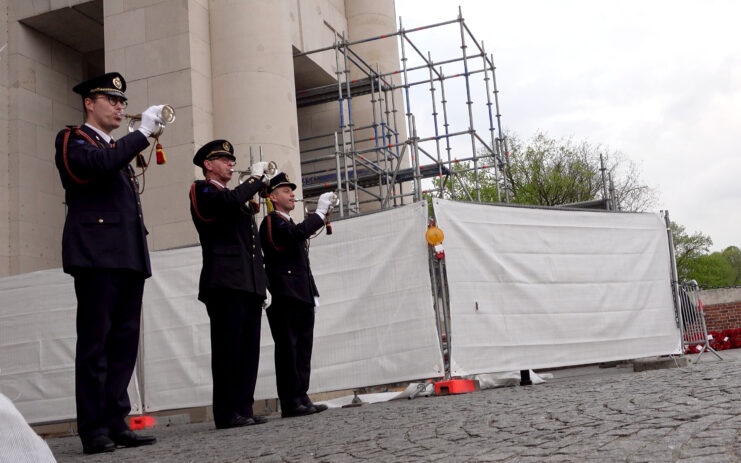
The restoration work has just started in the city, where a daily “Last Post” ceremony is held each evening, rain or shine. Traffic is halted at 8:00 PM nightly and the ceremony occurs under the middle of the arch, with the bugle calls reverberating off the stone walls and roof.
Now, it’s been moved in front of the East entrance.
Overseeing the project on behalf of the Commonwealth War Graves Commission (CWGC) is Site Manager Sarah Camerlynck. She’s spent the last two years inspecting as much of the structure as possible, compiling reports for architects and construction teams selected by the Commission.
Once the monument has been totally clothed in scaffolding, Camerlynck will have an extra chance to check it over, almost inch by inch!
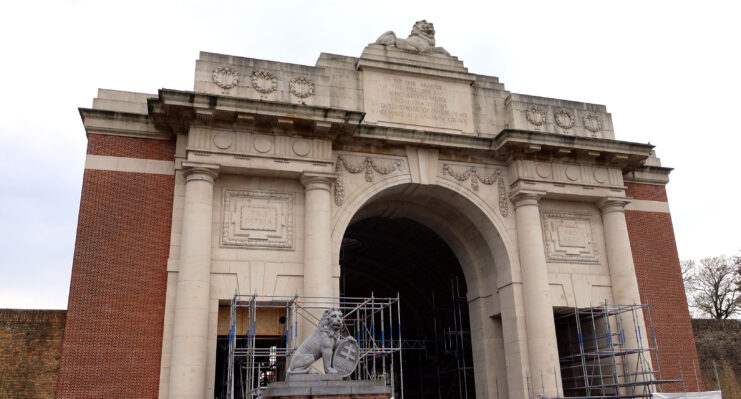
Some parts of the memorial have weathered well, but where damage has occurred it will need to be restored or replaced. Built of limestone and brick, some materials and mortars will need to be replaced to improve general waterproofing. The roof is planned to be mostly rebuilt, becoming environmental green. This is thought to improve its life by two or three times!
One major factor that had to be addressed is that the Menin Gate is a key entryway into Ypres, so most of the work will carry on with the road still very much in use – although only one way.
The prized precious name panels made from Portland stone will certainly be one area that will be inspected in fine detail. Here, 54,586 names of the fallen, without any known grave, are inscribed. With so many names, weathering may have reduced their legibility, which is where letter-cutting mason’s will attempt to re-cut them in situ.
If necessary, whole panels could be re-cut. Although, today, that work can be completed using CAD milling machines that carve the stone using computer control. Nearby, at Arras, is a specialist facility run by the CWGC, where such machines and skills are available, if they’re required.
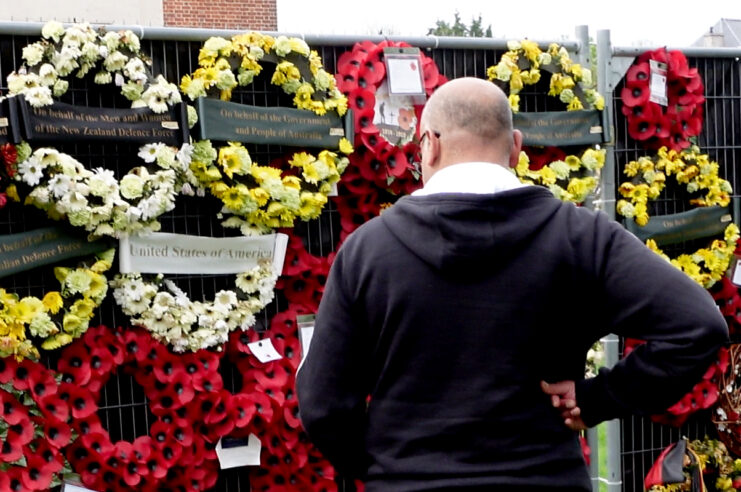
The museum and visitors center in Arras is where you can see some of the work carried out by the CWGC, be they carpenters, metal workers or stone masons, plus the gardeners and horticultural staff who tend some of the 200 cemeteries around this immediate area of Flanders.
All around the world, the CWGC looks after 23,000 cemeteries and war memorials. There’s such a concentration of graves in this specific region because the two World Wars fought across almost the same ground in Flanders. In WWI, there were three battles of Arras, with the last major engagement being Passchendaele.
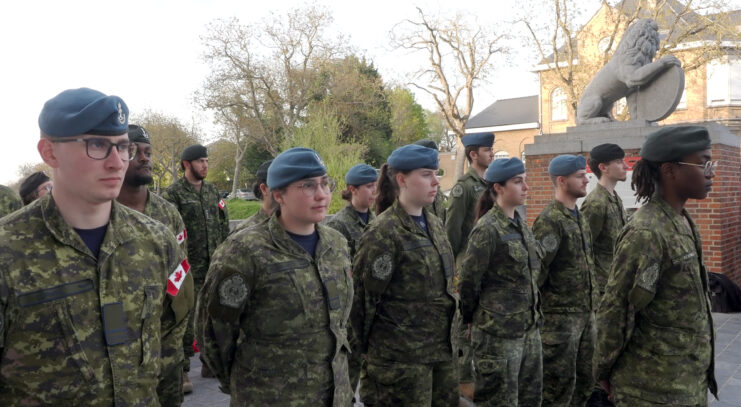
Menin Gate was chosen because of the thousands of soldiers who would have passed through on their way to the battlefields in this sector called the Ypres Salient. It commemorates the Australian, Canadian, Indian, South African and British troops who died in the Salient.
British casualties prior to August 16, 1917 are listed there. During that period, some 450,000 soldiers were killed, with the battle lines moving forward and back only four miles during the whole conflict. In the latter stages, it was a muddy hell, even stopping tanks! Although, today, there are few signs of that… Just trimmed neat fields of corn and crops, with the trees and hedges fully returned.
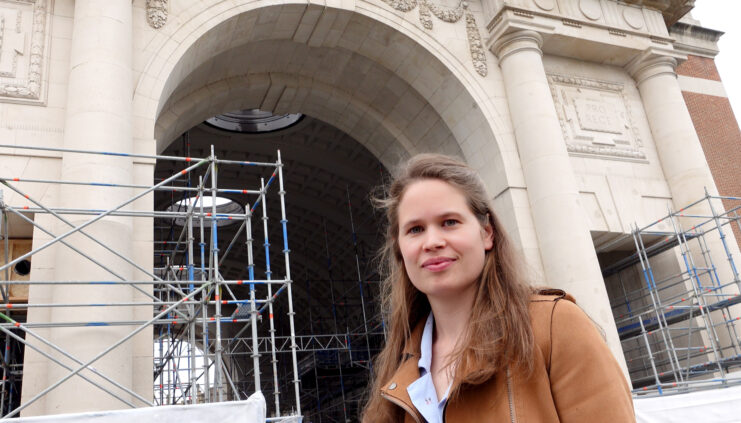
Later deaths from the UK and New Zealand from after that date are named on the huge memorial at Tyne Cot. Coincidentally, it was the site that marked the furthest point reached by the Commonwealth forces in Belgium until nearly the end of the war. Kiwi casualties after August 16, 1917 are commemorated on memorials at Buttes New British Cemetery and Messines Ridge British Cemetery, all very close to Ypres.
Designed by Sir Reginald Blomfield, the memorial was unveiled by Lord Plumer on July 24, 1927.
Former bunkers still litter the landscape, and two remaining German bunkers have been included within the massive British cemetery at Tyne Cot. There are 11,961 Commonwealth servicemen from the First World War buried or commemorated in Tyne Cot, and the memorial wall bears the names of nearly 35,000 British and Kiwi soldiers, again with no known grave.
Sadly, many more gravestones carry the inscription “A Soldier of The Great War,” rather than their actual name, which is why memorials like the Menin Gate are so important.
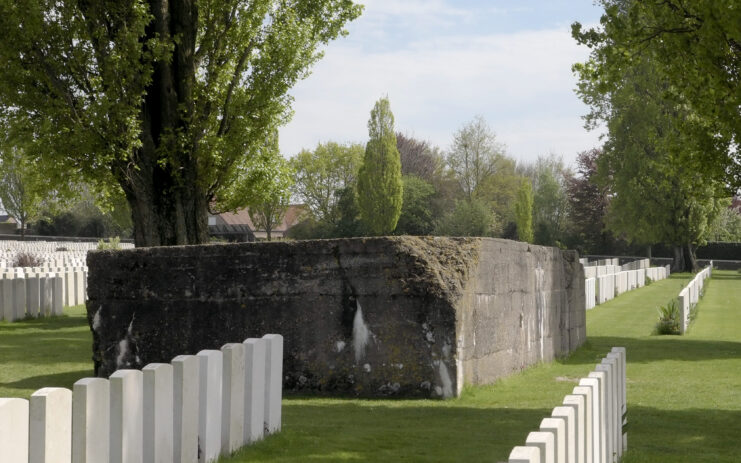
Some countries, like the United States, decided after the war to repatriate their fallen – and many were returned. In the end, 43,909 bodies were brought back to America. One funeral ship that docked in Hoboken, New Jersey on May 23, 1921 was met by President Warren G. Harding as he paid tribute to the 5,000 bodies that arrived onboard the USAT Wheaton.
More from us: Normandy-Based Historians Create Documentary Honoring Canadian Regiment That Fought On D-Day
A point worth noting is that nearly 800,000 soldiers from the UK and US died during WWI. If you watched the coronation of King Charles III on television, there were just 4,000 service personnel in that parade, meaning that 200 times that amount died during the conflict. That’s an average total of 480 deaths per day.
The post ‘Last Post’ Memorial In Ypres Undergoing Two-Year Restoration appeared first on warhistoryonline.
Post a Comment
0 Comments